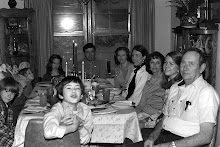She knew COVID-19 was dangerous in late January when she heard a man in Wuhan, China, share his experience on the radio. He sounded like he was crying as he described being locked down in his home with the body of his uncle who had died of the disease. By late February, there were reports of numerous local outbreaks so she went pandemic shopping at the grocery store and bought food and supplies to last a few weeks. On March 12, it was announced that the local schools would close for the indefinite future and everyone should stay at home and shelter in place.
During the same period, she struggled with her health. She had been going to doctors since October trying to find answers for her swollen lymph nodes and lack of energy. By mid-February, the doctors were grooming her for a cancer diagnosis. On March 13, the first day that schools were closed, they slit her neck open and took a lymph node to biopsy. And shortly after that it was confirmed--she had lymphoma.
To get a cancer diagnosis during a worldwide pandemic feels very personal--like death is stalking you. No part of life was normal. Certainly not her life, but also not the lives of work colleagues, friends, or even strangers on the street. Everything was changed. In the New York metro area, where she lived, a lot of people began to die. There were so many bodies, they brought in trailers to store them in. By her first chemo treatment on April 6th, there were over 21,000 dead in NYC and 12,000 more dead in New Jersey.
During her chemo treatments, sometimes a song would come on over the speakers, a fragment of "Here Comes the Sun." "A COVID-19 patient is being released from the hospital," explained a nurse, "They play it to celebrate."
July 20th was her 6th and final chemo treatment. She was in remission, but no one knew if she would stay there. The novel coronavirus was still in the world, so the world was still in the grip of the pandemic. It seemed like everyone lived in fear. Spending so much time with the thought of death, she started making art, drawing images of what people left behind when they died--a cup, an artwork, a piece of clothing. It was a way to make meaning, perhaps. Or it was a way to avoid thinking too much about who she would leave behind--her son, husband, mother--and how her death would hurt them. And her inability to make things different.

